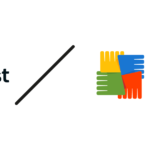Gaining rewards by staking Ethereum is a popular activity among those who are keen on cryptocurrencies, contributing to the safety and steadiness of the Ethereum network. By staking Ether (ETH), the main digital currency of the Ethereum blockchain, individuals can participate in the Proof of Stake (PoS) protocol, an important aspect of the Ethereum 2.0 upgrade. Yet, this innovative approach comes with its set of benefits and potential hazards, which should be thoughtfully considered before getting involved in ETH staking.
Here’s the easiest way for a beginner to stake their eth:
- Choose a Staking Service: Platforms like Coinbase, Kraken, Binance, or Lido allow users to stake ETH without the technical hassle.
- Deposit ETH: Once registered, you simply deposit your Ethereum into the platform’s staking option.
- Follow Instructions: Each platform will have a few steps to enable staking. It’s typically just a matter of confirming you want to stake and agreeing to the terms.
- Earn Rewards: The platform will handle the rest. You’ll start earning rewards based on your staked amount.
But this is not the only way, and there are pros and cons to each method. In this article, you will learn everything about staking and the history of eth, so you can make an informed decision about how to proceed.
Staking Ethereum can be highly rewarding and help you grow your crypto portfolio. However, it’s essential to weigh the potential benefits along with the risks involved. By carefully assessing the options available for staking Ethereum, you can make an informed decision that best suits your goals and expertise as an ETH enthusiast.
Table of Contents
Key Takeaways
- Staking Ethereum allows you to earn rewards while contributing to network security and stability.
- Understanding the PoS mechanism is crucial for successfully staking Ether on Ethereum 2.0.
- Assessing benefits and risks is essential before committing to any Ethereum staking strategy.
What Is Ethereum Staking?
Ethereum staking is a process in which users of the Ethereum network, known as validators, lock up a certain amount of their Ether (ETH) tokens to participate in the blockchain’s proof-of-stake (PoS) consensus mechanism. By doing so, they contribute to the network’s security, scalability, and energy efficiency.
In Ethereum 2.0, the PoS consensus mechanism replaces the previous proof-of-work (PoW) system. This significant upgrade, called the beacon chain, aims to increase decentralization and reduce the massive energy consumption associated with mining. To participate in Ethereum staking, you need to stake at least 32 ETH.
As a validator, your role is to propose and confirm new blocks on the Ethereum blockchain. You’ll store your ETH in a staking contract to secure the network and help maintain its validity. In return for your efforts, you can earn rewards or interest on your staked amount, contributing to the growing world of decentralized finance (DeFi) applications.
There are several ways to stake Ethereum, including solo staking and joining a staking pool. Solo staking requires a dedicated computer connected to the internet 24/7 and a solid understanding of the protocol. Alternatively, if you don’t have the technical skills or enough ETH to stake independently, you can join a staking pool or use a staking service like Kraken.
As you stake your Ether, the yield you can earn will depend on various factors, such as the total amount of ETH staked across the network, your pool’s performance, and the chosen staking service’s fees. Keep in mind that staking involves some risks, such as fluctuating rewards and potential loss of staked tokens if you, as a validator, fail to uphold the network’s rules.
By choosing to stake Ethereum, you’re not only contributing to the blockchain’s security and scalability, but also potentially earning passive income through yield. Remember to thoroughly research the staking process and carefully weigh the risks and rewards before committing your hard-earned Ether to the endeavor.

Understanding PoS Mechanism
Validators and Their Role
In a PoS (proof-of-stake) system, validators play a crucial role in maintaining the Ethereum network. Validators are responsible for creating new blocks on the blockchain and validating the transactions in them. Instead of using computational power, like in proof-of-work (PoW) systems, validators in a PoS system lock up a certain amount of their cryptocurrency (in this case, ETH) as a stake.
As a validator, you’ll be chosen to create new blocks and validate transactions based on the proportion of your stake relative to the total stake of all validators. This means that the more ETH you stake, the higher your chances of being chosen. Remember that there are risks involved in staking, such as penalties for malicious behavior, so it’s essential to understand the PoS mechanism properly before participating.
Ethereum 2.0 and Beacon Chain
Ethereum 2.0, also referred to as Eth2, is the major upgrade to the Ethereum blockchain that shifts the consensus mechanism from PoW to PoS. The key component of Ethereum 2.0 is the Beacon Chain, which manages the PoS protocol and validators.
The Beacon Chain is a separate chain responsible for managing the PoS validators and keeping track of their stakes. It does not handle smart contracts or transactions like the Ethereum main chain does. The two chains will ultimately merge, making PoS the sole consensus mechanism for Ethereum.
PoS Vs PoW: The Shift
The shift from PoW to PoS is significant for a few reasons. Firstly, PoS is more energy-efficient than PoW, leading to a greener and more sustainable network. This is because PoS validators don’t require the same energy-intensive hardware that PoW miners do.
Additionally, PoS facilitates better network scaling and increased transaction throughput. Ethereum 2.0 and the move to PoS were initiated to address the limitations of the PoW consensus mechanism used on the Ethereum main chain.
In summary, understanding the PoS mechanism, the role of validators, and the shift from PoW to PoS in Ethereum 2.0 is crucial for anyone interested in staking Ethereum. Remember to consider the risks involved in staking and ensure that you’re well-informed about the proof-of-stake process before participating.
How to Stake Ethereum
Choosing the Right Wallet
Before you start staking Ethereum, it’s crucial to choose a suitable wallet for storing and managing your ETH. There are numerous options available, each with unique features and security levels. Some popular wallets with support for Ethereum staking include hardware wallets like Ledger and Trezor, as well as software wallets like MetaMask and MyEtherWallet. When selecting a wallet, consider factors such as security, ease of use, and compatibility with staking platforms.
Staking on Exchanges
Staking Ethereum through a cryptocurrency exchange is a popular option for those who prefer a more straightforward approach. Many centralized exchanges like Binance and Coinbase offer staking services, allowing you to earn rewards without needing to set up a validator node yourself. To participate, simply deposit your ETH to the exchange and follow their staking guidelines.
Keep in mind that when using a centralized exchange for staking, you may have limited control over your funds, as the exchange acts as a custodian. Additionally, the rewards may be lower than other staking options due to fees charged by these platforms.
Staking via Staking Pools
If you don’t have the required 32 ETH to run your own validator node, you can still participate in Ethereum staking through a staking pool. In a staking pool like Lido or Rocket Pool, users can pool their ETH together to create a validator node and share the staking rewards. This approach is also known as staking-as-a-service or staking launchpad.
When selecting a staking pool, consider its reputation, fee structure, and historical performance. While staking pools often provide an easier entry point for Ethereum staking, they may also come with risks such as the dependency on pool operators, who manage your staked ETH on your behalf.
My personal favorite staking service is Lido, let’s walk through the easiest way to stake with Lido right now:

How to Stake ETH using Lido:
- Wallet Preparation:
- Ensure you have a web3-enabled wallet like MetaMask, WalletConnect, or Ledger, with some ETH in it to cover transaction fees.
- Visit Lido’s Official Website:
- Go to Lido’s official website.
- Connect Your Wallet:
- Click on the “Connect Wallet” or similar button on the Lido website.
- Choose your wallet provider from the list and follow the prompts to connect.
- Enter Amount to Stake:
- Once connected, you’ll see an interface to stake your ETH.
- Specify how much ETH you’d like to stake.
- Confirm Transaction:
- After entering the desired staking amount, click on the “Stake” or similar button.
- Your wallet will prompt you to confirm the transaction. Ensure you review the transaction details, gas fees, etc.
- Confirm the transaction in your wallet.
- Receive stETH in Return:
- Lido will give you stETH (staked ETH) tokens in return for your staked ETH. This represents your staked amount and any rewards you’ll earn.
- stETH tokens can sometimes be used in DeFi protocols, or you can simply hold them in your wallet.
- Monitor Your stETH Balance:
- As ETH 2.0 validators earn rewards, the value of stETH will increase relative to ETH. This means your stETH balance should gradually increase over time, reflecting your earned staking rewards.
- Unstaking (Note):
- With Lido, you can’t directly “unstake” your ETH until ETH 2.0’s full launch. However, because you have stETH, you can sell or trade these tokens if you need liquidity.
Benefits and Risks of Staking Ethereum
Rewards and Earning Potential
Staking Ethereum offers numerous benefits, including the ability to earn passive income from your crypto holdings. By staking your Ethereum tokens (ETH), you help secure the Ethereum network by participating as a validator. Validators are then rewarded with a percentage yield from newly minted ETH, providing an opportunity to grow your investment and earn interest on your staked assets.
It’s important to understand that the rewards from staking are not guaranteed and can fluctuate based on various factors, such as network demand and the total amount of staked ETH. However, the overall outlook for staking Ethereum is positive, allowing you to potentially benefit from the Annual Percentage Yield (APY), which can range anywhere from 5% to 20%.
Potential Risks and Penalties
- Staking Pools: If too many people use just a few big staking pools, it can centralize the system. That’s a no-no for blockchain which thrives on being spread out.
- Penalties: If you’re not careful or your setup goes haywire, you might lose some of your staked ETH. It’s like a penalty in a game.
- Locked Funds: When you stake your ETH, it’s like putting it in a time-locked safe. You can’t touch it for a while, which can be tricky if you suddenly need it. This does not apply to using a liquid staking service like Lido. If you use something like Lido, you can withdraw at any time, which makes it a good option if you need quick access to your funds.
- Energy Costs: Staking isn’t free; it uses electricity. Make sure you’re not spending more on power than you’re earning from staking. This only applies to people who stake using their own nodes, if you’re using Lido you don’t have to worry about this.
- Market Volatility: The value of ETH can go up and down. By the time your staking period ends, ETH’s value might be different than when you started.

Staking Ethereum for Developers
As a developer, staking Ethereum can be an exciting opportunity to participate in the Ethereum blockchain. In this section, we’ll briefly explore the process of staking, the different options, and what you need to know to become a successful validator.
First, you must understand that Ethereum is transitioning from a Proof of Work (PoW) consensus algorithm to a Proof of Stake (PoS) algorithm with Ethereum 2.0. Staking Ethereum requires you to lock a minimum of 32 ETH in a smart contract, making yourself eligible to become a validator.
Validators play a crucial role in the Ethereum network by validating transactions, proposing new blocks, and maintaining the decentralization and security of the blockchain. When you stake your 32 ETH, you become eligible for rewards proportional to your stake, but you’re also taking on the responsibility to maintain a validator node and actively participate in the network.
There are three main options for staking Ethereum: solo home staking, pooled staking, and staking-as-a-service.
- Solo Home Staking: In this option, you run and maintain your own validator node. This requires technical knowledge, a dedicated computer, and a stable internet connection. While this method offers full rewards and increases decentralization, it can be challenging for developers without prior experience or limited resources.
- Pooled Staking: This option allows you to join a staking pool, where your ETH is combined with other participants to create a larger validator. The rewards are then distributed among pool members according to their contribution. This method is more accessible for developers with less than 32 ETH or those who prefer not to run a validator node themselves. Nevertheless, it requires trust in the staking pool operators and may yield lower rewards.
- Staking-as-a-Service: In this approach, you delegate staking to a third-party service that handles all the technical aspects of running a validator node. This allows you to focus on your development work while still benefiting from staking rewards. However, it involves fees and also requires trust in the staking service provider.
When choosing your staking method, consider your technical expertise, available resources, and the level of trust you have in third-party providers. Deciding on the right option will help ensure your success as a validator and enable you to contribute to the broader Ethereum ecosystem.
As a developer, staking Ethereum offers not only potential rewards but also the opportunity to be an active participant in the growth of the blockchain and the expansion of decentralized applications built on smart contracts. Embrace the challenge and contribute to the Ethereum network’s ongoing development.
Prospects of Ethereum 2.0
Ethereum 2.0, also known as ETH2, is an anticipated upgrade to the Ethereum network aimed at improving its security, scalability, and energy efficiency. It seeks to address these issues by transitioning the network’s consensus mechanism from Proof of Work (PoW) to Proof of Stake (PoS).
As an investor or potential staker, you might be interested in the prospects this upgrade brings. The introduction of the beacon chain has laid the foundation for Ethereum 2.0’s PoS system. In this phase, validators are required to stake a minimum of 32 ETH to participate in securing the network. If you don’t have 32 ETH, you can still join staking via various staking services, such as Lido or Stakewise. But why stake on the Ethereum network in the first place? Let’s delve into a few reasons.
Lower Energy Consumption and Enhanced Scalability
With Ethereum 2.0, the blockchain is expected to become more energy-efficient as the PoS model eliminates the need for miners to solve cryptographic puzzles to validate transactions. This reduces energy consumption drastically compared to the PoW model. Additionally, Ethereum 2.0 will introduce shard chains, which will increase the number of transactions processed per second and the overall capacity of the Ethereum network.
Validator Incentives and Security
By participating in staking, you effectively become a validator for the Ethereum network. Validators take turns proposing and attesting to new blocks in the blockchain, ensuring smooth transactions and maintaining the overall security of the network. For their efforts, validators receive rewards in the form of ETH. These rewards, along with the thriving market for Ethereum and other digital assets, create attractive opportunities for investors.
Upcoming Development Milestones and Market Impact
The Ethereum 2.0 upgrade consists of multiple development milestones. The Merge, where Ethereum’s current PoW blockchain is merged with the PoS beacon chain, is one of the most significant upcoming events. This transition will further cement Ethereum 2.0’s role as a leading blockchain platform. Moreover, developments like the Shanghai upgrade will introduce protocol optimizations and enhancements, potentially resulting in increased demand for Ethereum and greater market cap growth.
In summary, Ethereum 2.0 holds promising prospects for the entire blockchain ecosystem. By introducing PoS and other enhancements, Ethereum aims to improve scalability, sustainability, and security, laying the groundwork for a more robust and battle-tested network. Embracing ETH staking, either through validator nodes or staking services, can offer a rewarding opportunity for digital asset enthusiasts to support the Ethereum network’s growth while reaping the benefits of its continued success.
Conclusion
Staking Ethereum is a valuable way for you to contribute to the network’s security while potentially earning rewards for your participation. By staking your ETH, your validator software actively participates in securing the Ethereum blockchain, helps process transactions, and adds new blocks to the chain.
Before deciding to stake, it’s essential to understand the minimum requirement of 32 ETH and the responsibility that comes with being a validator. Ensure your validator software maintains uptime, or you may face penalties that could reduce the staked amount.
Additionally, remember that staking ETH locks your funds for a specified period, meaning you need to plan carefully before committing to this process. To stake Ethereum, you can either run your validator or opt to use a cryptocurrency exchange that offers staking services.
In the world of crypto, Ethereum staking is an excellent opportunity for you to actively participate in the growth of the ecosystem and support the transition from a proof-of-work model to a more energy-efficient proof-of-stake system. With careful planning and a clear understanding of the staking process, you can make the most of this opportunity while maintaining a neutral and transparent approach to securing the Ethereum network.
Frequently Asked Questions
How to stake Ethereum on Coinbase?
To stake Ethereum on Coinbase, you’ll first need to create an account and complete your identity verification. After that, transfer your ETH to Coinbase, and visit the staking page to select Ethereum staking. Follow the instructions provided to lock up your ETH. It’s important to note that staking on Coinbase means your funds will be locked for a specific period, and you may be charged a fee by the platform for this service.
What are the requirements for Ethereum validator?
To become an Ethereum validator, you need to have a minimum of 32 ETH as stake. Additionally, you must have a dedicated computer connected to the internet 24/7, and be prepared to maintain and operate validator software. Validators should also stay up to date with Ethereum network upgrades and be responsible for ensuring the security of their validator node.
What are the potential rewards for staking 32 ETH?
The potential rewards for staking 32 ETH vary depending on factors such as network participation and the overall ETH staked across the network. The Ethereum network adjusts staking rewards based on the amount of ETH being staked. Generally speaking, you can expect an annual percentage return (APR) ranging from 5% to 18%. Use a staking calculator to estimate your potential rewards based on the current network metrics.
How to stake Ethereum using Ledger?
Staking Ethereum using a Ledger hardware wallet involves delegating your stake to a staking provider that supports hardware wallets. An example of such a provider is Lido. Connect your Ledger device to a compatible wallet interface like MetaMask, which will allow you to interact with the Lido staking platform. Follow the instructions on the platform to stake your ETH and store the staking keys securely on your Ledger device.
What are the withdrawal options for ETH staking?
Currently, there are no immediate withdrawal options for ETH staking, as the Ethereum network is in the process of transitioning from proof-of-work to proof-of-stake. Once the Ethereum 2.0 upgrade is complete, withdrawals and transfers are expected to be enabled. Until then, your staked ETH will remain locked in the network. However, some staking providers offer tokenized versions of staked ETH (e.g., stETH), which can be traded or used as collateral in DeFi applications.
Which platform is best for staking Ethereum?
The best platform for staking Ethereum depends on your individual requirements, technical expertise, and preferences. Solo staking by running your own validator offers higher rewards and better decentralization but requires more technical know-how and maintenance. On the other hand, staking platforms such as Coinbase or Lido offer a more user-friendly option with lower rewards and fees involved. Weigh the pros and cons of each method, keeping in mind factors like fees, rewards, and ease of use to choose the best platform for your needs.











2 thoughts on “How to Stake Ethereum: A Concise Guide for Beginners”